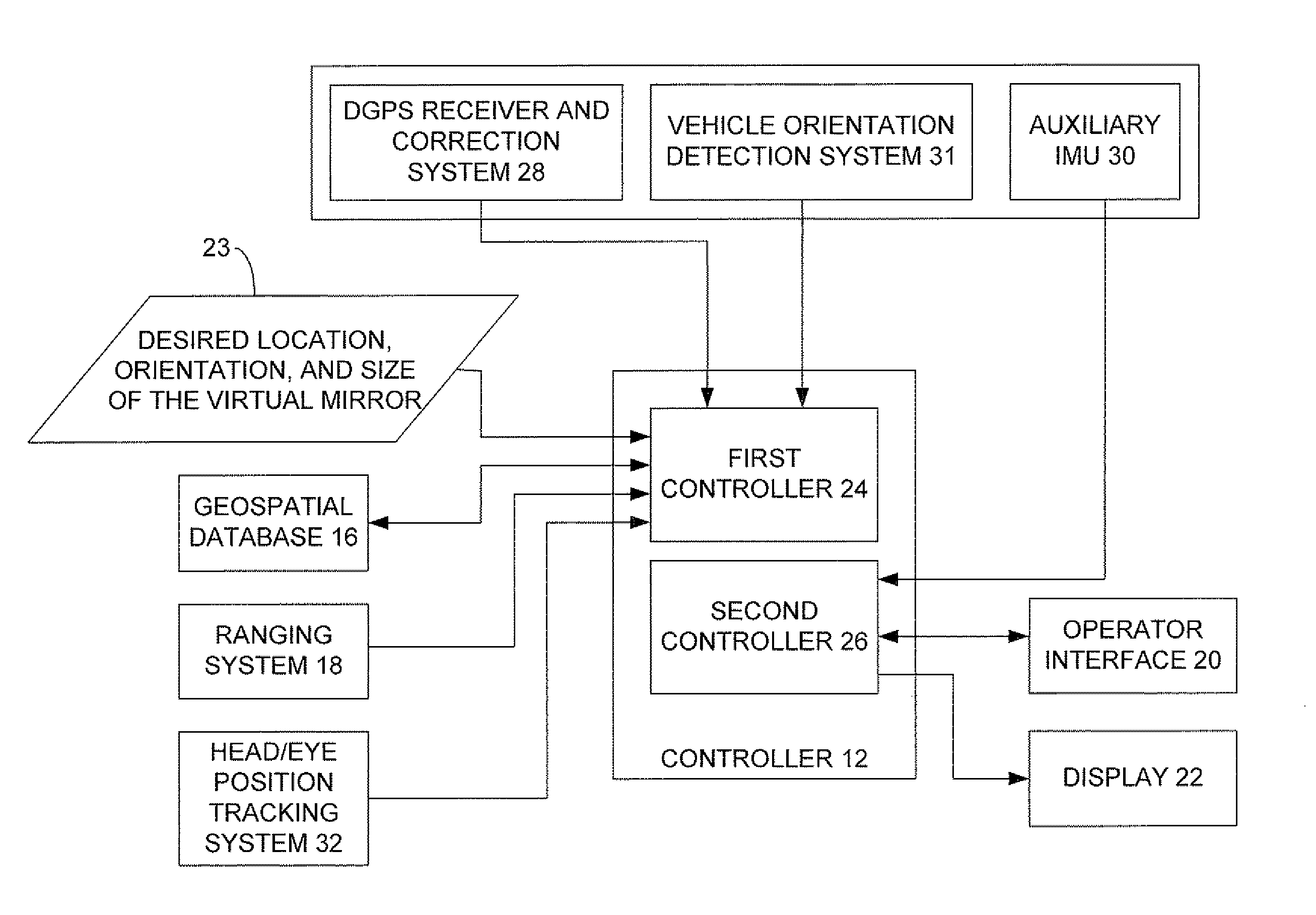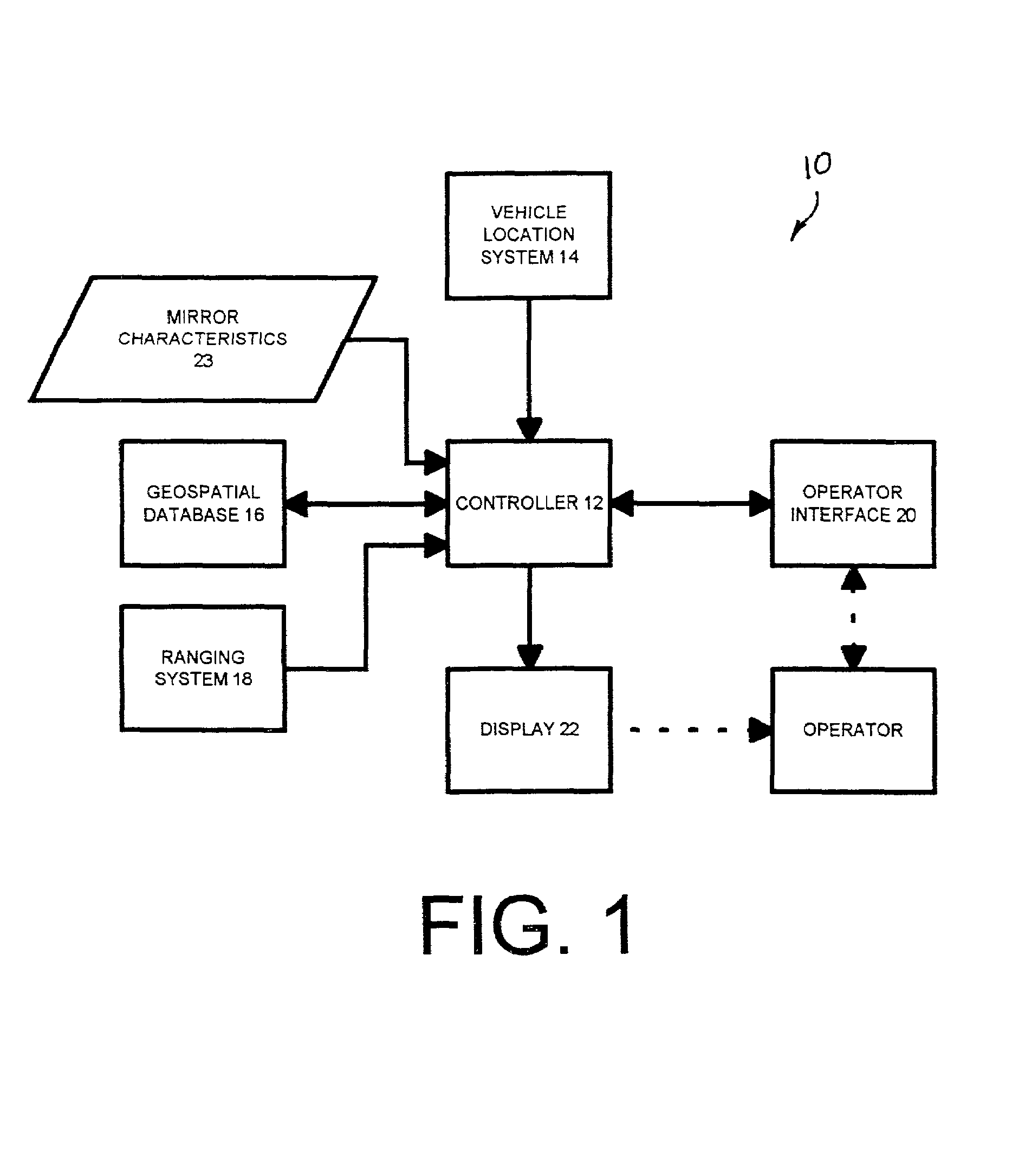Virtual mirror
a virtual mirror and mirror technology, applied in the field of mirrors, can solve the problems of obstruction and limitations of the field of view, the overlap of the already narrow field of view, and the blind zone associated with the conventional mirror
- Summary
- Abstract
- Description
- Claims
- Application Information
AI Technical Summary
Benefits of technology
Problems solved by technology
Method used
Image
Examples
Embodiment Construction
[0040]The present invention can be used with substantially any mobile body. However, the present description proceeds with respect to an illustrative embodiment in which the invention is implemented on a motor vehicle as a driver vision assist device (or virtual mirror). FIG. 1 is a simplified block diagram of one embodiment of vision assist device 10 in accordance with the present invention. Assist device 10 includes controller 12, vehicle location system 14, geospatial database 16, ranging system 18, operator interface 20 and display 22. FIG. 1 also shows that controller 12 receives, as an input, virtual mirror characteristics 23.
[0041]In one embodiment, controller 12 is a microprocessor, microcontroller, digital computer, or other similar control device having associated memory and timing circuitry. It should be understood that controller 12 can be implemented as one or more processors or computers, and that the memory can be integrated with controller 12, or be located separatel...
PUM
 Login to View More
Login to View More Abstract
Description
Claims
Application Information
 Login to View More
Login to View More - R&D
- Intellectual Property
- Life Sciences
- Materials
- Tech Scout
- Unparalleled Data Quality
- Higher Quality Content
- 60% Fewer Hallucinations
Browse by: Latest US Patents, China's latest patents, Technical Efficacy Thesaurus, Application Domain, Technology Topic, Popular Technical Reports.
© 2025 PatSnap. All rights reserved.Legal|Privacy policy|Modern Slavery Act Transparency Statement|Sitemap|About US| Contact US: help@patsnap.com



